If you are looking for maximum comfort and warmth to be able to hibernate in style and without getting cold, here we help you by explaining the effectiveness of each fabric to sleep at the ideal temperature.
It is cold. It’s been a long day, but luckily you’ve made it home. You are happy because the temperature is so low that what you dreamed of at work was just that: going to your room, turning on the stove, putting on your pajamas and deciding what to watch at night. diffusion. You turn on the underblanket and you feel good between your blankets and your pillows. It was all you needed.
In these winter days, good pajamas can help you spend warmer and warmer nights. According studies We spend about a third of our life sleeping. Seen from this angle, investing in a good comfortable and useful garment to spend the nights, especially the coldest ones, makes sense.
Frozen feet? These are the best socks to face the cold
But how do you choose the warmest, most durable and pleasant one? There are some attributes you can take into consideration when purchasing. The important thing is to be informed so as not to make decisions based solely on design.
According to the type of fabric
Cotton
This fiber is soft and breathable. Being a fluid material, it molds easily to the body, without the stiffness that some synthetic strands can have. Being strong yarns, properly cared for cotton garments can last for many years, so despite their value, which can sometimes be high, most of the time they are worth the investment.
The detail: being a breathable material, it does not retain heat. If we are looking for pajamas that contain us, the ideal is to favor this material when the temperatures are more pleasant, that is to say spring-summer type.
Ultimate Guide to Blankets: 16 Types of Blankets to Survive This Winter
If cotton is combined with synthetic yarns, it can be a good option for winter, for example thermal pajamas, which are usually made with cotton and polyester yarns. This mix is, without a doubt, a winning mix when you find yourself in colder places.
Women’Secret long pajamas 100% organic cotton

Polyester
Most of our clothes, if we read their labels, contain some percentage of polyester (the colloquial way of saying polyethylene terephthalate). In fact, many garments today are made 100% from this popular synthetic fiber, which is known to be durable and strong. Invented by British chemists, it became popular in the 1970s as an inexpensive material for making all kinds of clothing. Being a less breathable fiber, this makes it a good option for cold days. Although not known to be soft, there are methods and treatments to achieve greater comfort.
Long lounge pajama set 95% polyester, 5% elastane
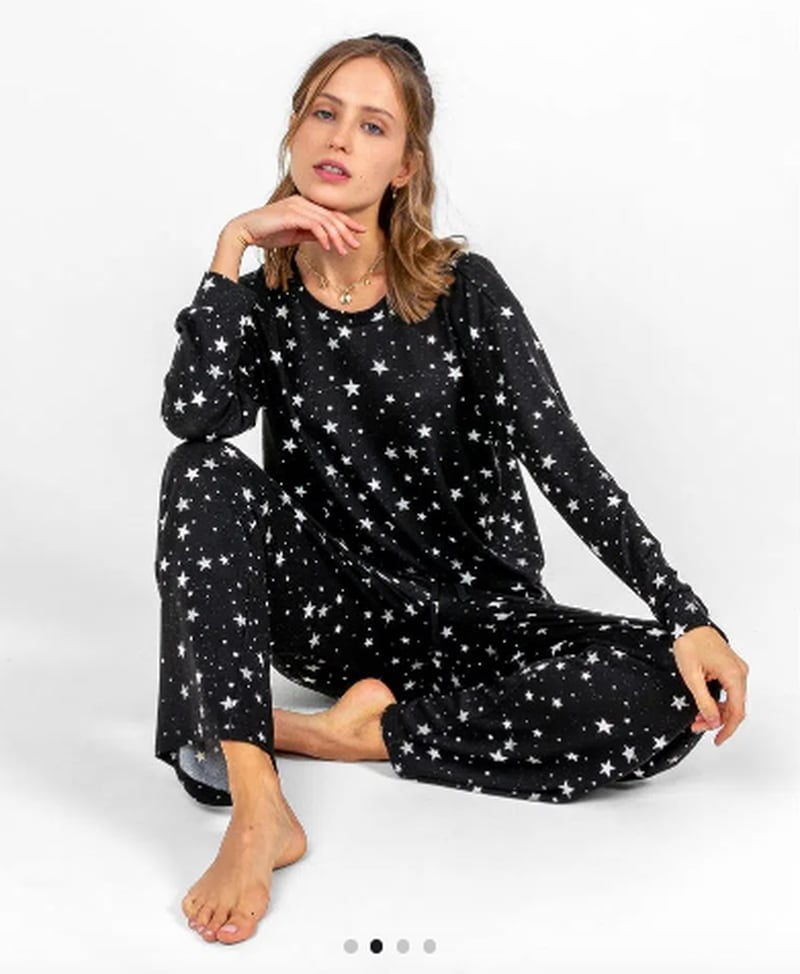
Flannel
Soft and warm: this is how we could define flannel, a loose fabric very characteristic of cold and mountainous regions. While it was once made with combed yarn or carded wool, it is currently made with wool, cotton and synthetic yarns. Its signature softness comes from a special brushing process called “take a nap”.
The origins of flannel date back to late 17th century Wales, they explain in master classes , when Welsh textile workers began using leftover sheep’s wool to create comfortable, warm and moisture-wicking fabric. Thus the original flannel shirts soon became the working uniform of Welsh farmers. The conquest of flannel spread to England and France, becoming the flagship textile of the working class during the industrial revolution.
How to choose the best underblanket (and what are the pros and cons of sleeping with it)
Their heyday in pop culture dates back to the 1990s, when groups of dirty they began to incorporate flannel shirts into their outfits. Today, it is a textile that accompanies both people Outside as for those who seek to show a see more alternative. Flannel is versatile, breathable, but at the same time warm. As pajamas, it is undoubtedly a great option for this fall/winter season.
Aerie Flannel Pajama Pants (50% cotton, 45% rayon)
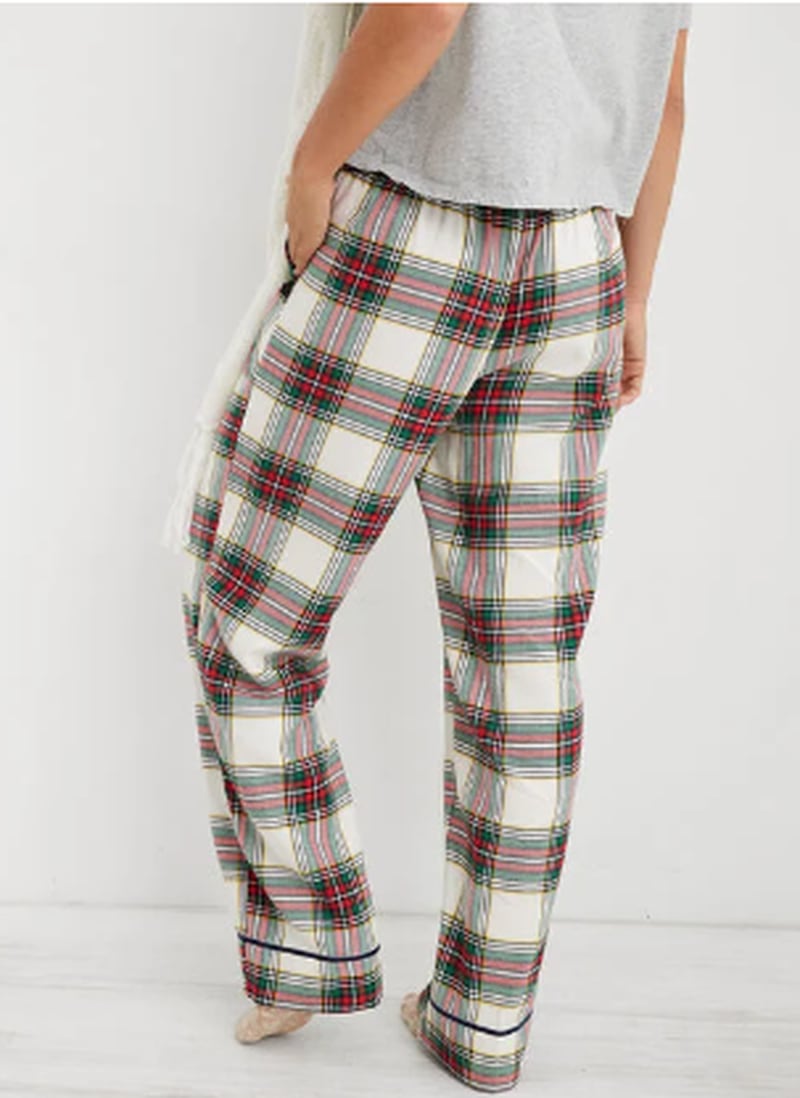
Oldest boy
Among wool’s greatest attributes are its heat retention, durability, and versatility, as it can be woven into heavy, chunky fabrics and other light, soft fabrics.
Wool can be obtained from sheep, goats, rabbits or camels, among the most common animals. In total, there are nine types of wool most produced in the textile industry: alpaca, angora, cashmere, merino, mohair, melton, lamb, camel and shetland.
And the pajamas? Although it’s a very warm textile, you’re likely to sweat a lot while you sleep, as the threads are very crippled, so they don’t allow much circulation. Although for chilly people, or places without heating and very cold, it will be very useful.
Rossignol merino wool pajamas
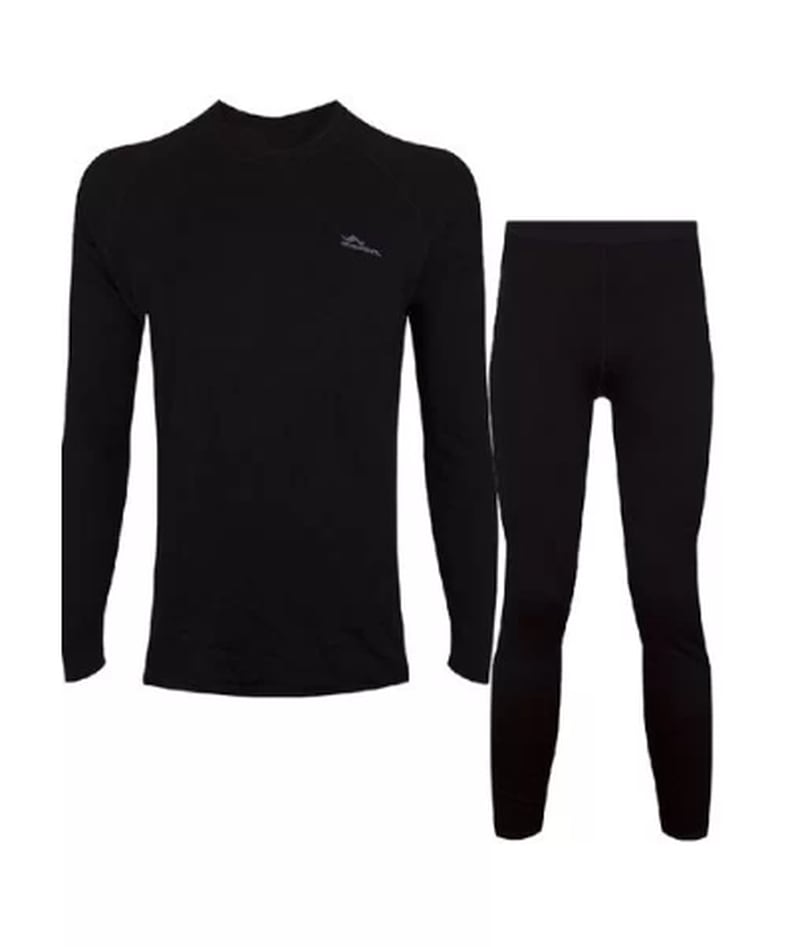
Silk
Silk is a natural fiber produced by insects as a material for their nests and cocoons. It is made up mostly of a protein called fibroin and is known for its shine and softness as a material.
It is also resistant, elastic and absorbent, as it manages the humidity of clothing well. Silk-producing insects include honey bees, beetles, weaver ants, and the silkworm, to name the most common.
Silk is also a versatile material, since you can find elegant dresses, upholstery or sheets. Silk pajamas provide warmth on cold days and coolness on hot days. What can make it difficult to use is washing, as the vast majority cannot be put in the washing machine. It is a delicate and expensive material, so if you want the garment to be very resistant, you must wash it as indicated on the product label or send it to the dry cleaners.
Mixed Lunna pajamas (silk and pima cotton)
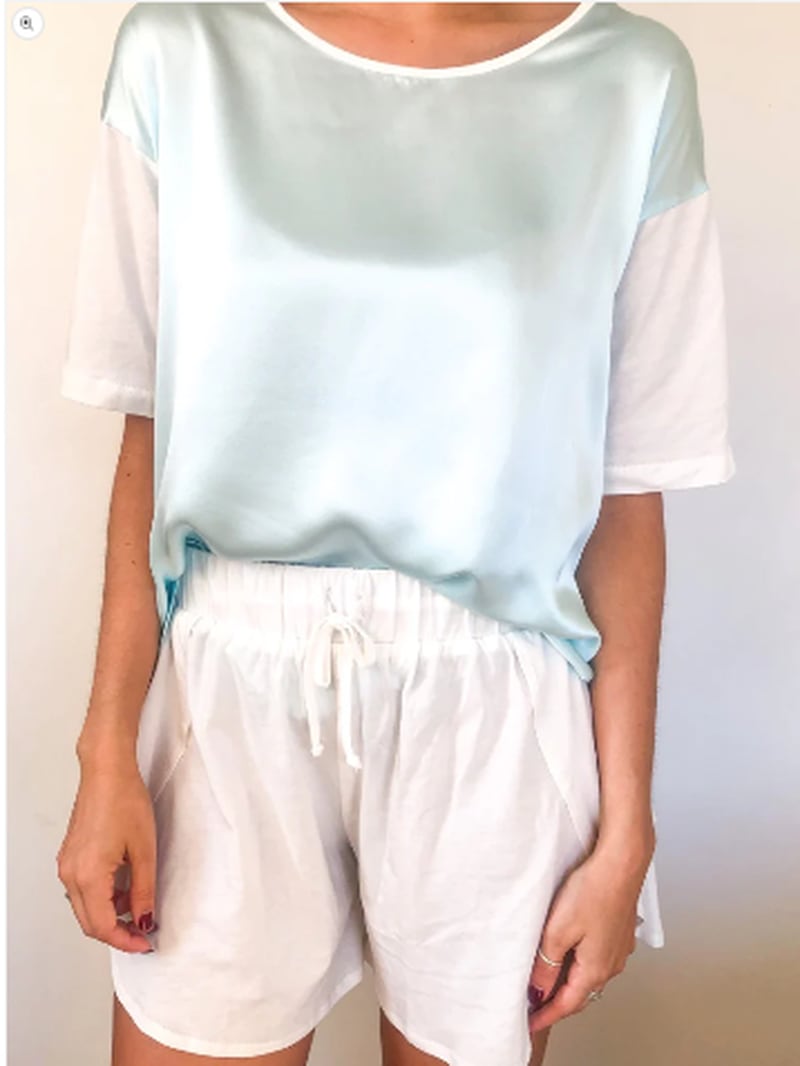
Polar
This synthetic fiber is the favorite of many because it is very thermal, affordable and soft (at least at first). This fabric is usually created from polyester, fibers that are woven into a lightweight fabric and then brushed, to help them fluff up. Other natural fibers such as wool, hemp or rayon are sometimes incorporated to create a more pleasing texture.
This textile is not only warm and durable, but also moisture resistant. It is lighter than wool and affordable, which is why it has been replaced many times.
Although it is a breathable fabric, it generates a lot of static electricity, so it can attract lint and pet hair, as well as cause reactions in people with sensitive skin. It’s a good pajama option if you don’t mind that last point.
Baziano Comfy microfleece pajamas
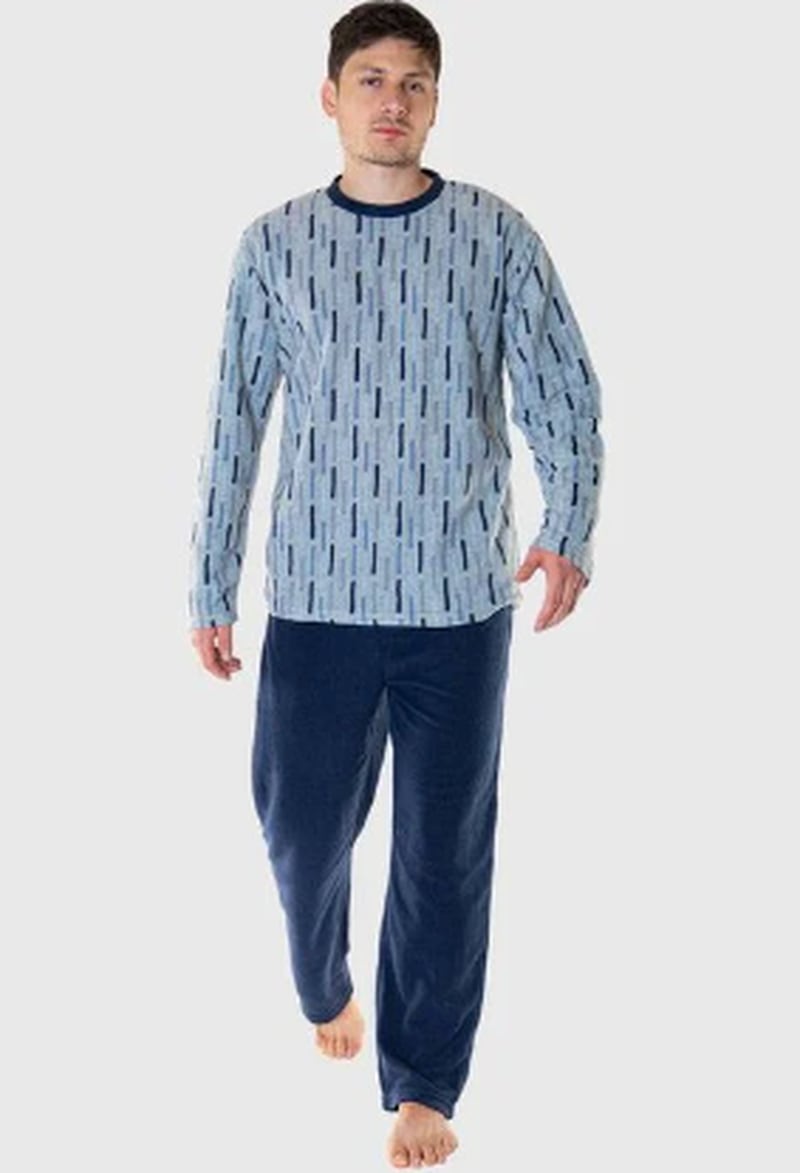
sateen or sateen
Known for being a smooth and shiny fabric, satin is often used for elegant dresses. One of its main characteristics is that it has a smooth and shiny surface on one side, unlike a more opaque surface on the other. It is the result of the satin weaving technique.
Satin has its origins in medieval China, when it was made exclusively from silk. Weaving originated in the port city of Quanzhou, which was called Zaitun in medieval Arabic. That’s where his name comes from, they say in master classes . In addition, there are different derivative fabrics such as Charmeuse, Mesalina, polysatin, among other types.
Because the fabric is supple and soft, satin is often used for bedding, such as sheets and pillowcases, as well as pajamas. It is durable and tends to wrinkle very little. It’s a fabric that keeps you cool when temperatures rise, making it a great alternative in warmer seasons. However, these pajamas usually contain a certain percentage of polyester, so they are also useful in winter.
H&M satin pajamas
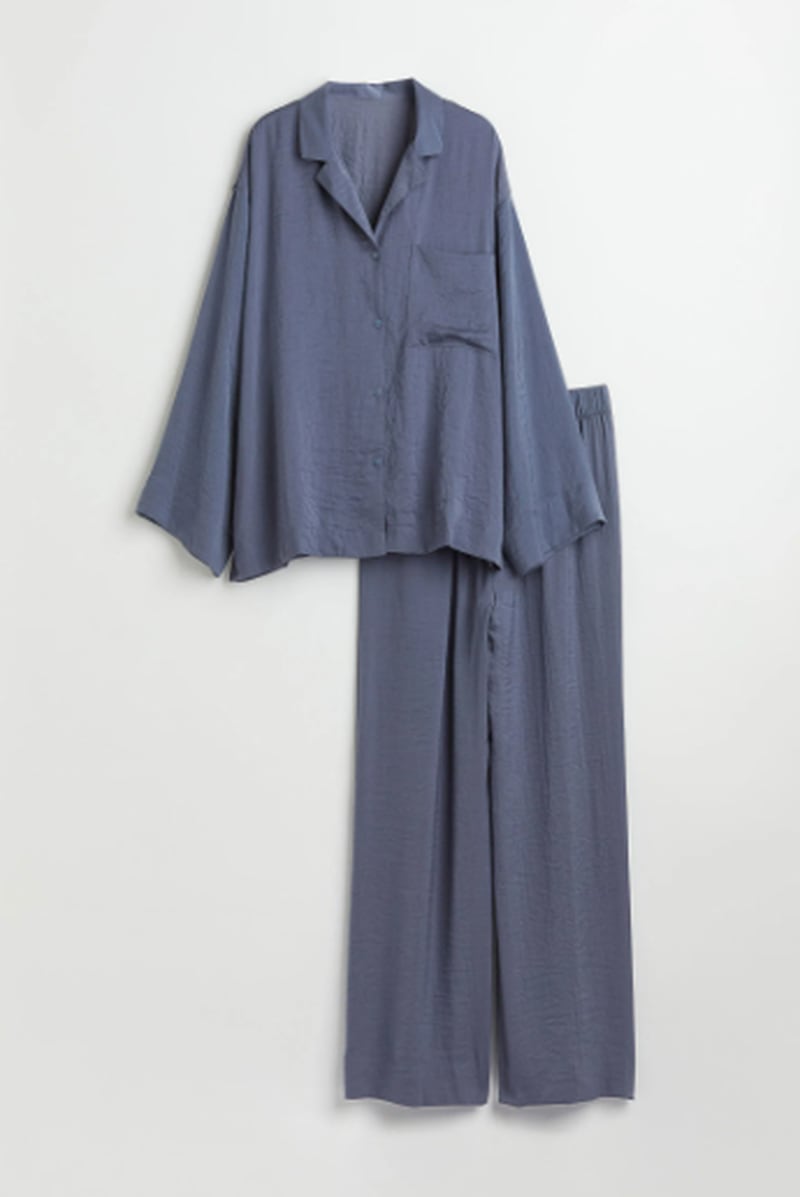
other tips
Cut
Here, the rule of comfort must be followed: it must be loose enough so that you do not feel tight during your sleep, otherwise it will not allow you to move or stretch. Even if it is too tight, it may break. The idea is for you to be able to move around easily while sleeping, so you’re as comfortable as possible.
Of course, you have to make sure it’s the necessary width, because if it’s exceeded, it will rise or fall throughout the night, which may mean you’re not resting in the best way.
Winter vacation. how to dress for the cold and lose the fear of playing outside
Have pajamas of different textiles
In the variety you can find maximum comfort, depending on the different times and temperatures of the year. This way you will have the solution to your problems at hand and you can change whenever you want.
how often to wash
Although this is something you only wear at home and for sleeping (or lounging), keep in mind that natural body oils, perspiration, dead skin cells, bacteria and household body care products (like body lotion) can build up in your pajamas. . So if you use them for several nights in a row, it can cause skin problems or irritation, as well as start smelling bad.
According to experts in Royal Bachelor this garment should be washed every three or four days, although this can be extended if we take a shower at night.
“If you wear pajamas to sleep and take them off as soon as you get up in the morning, you can probably get away with it several times before natural body oils, sweat and bacteria start building up on your skin. fabric, which are the things that cause the bad smell,” Gwen Whiting, co-founder of The Laundress, says in the article. you should wash it more often.”
In case you don’t want to follow these rules, the best way to check the right time to add it to dirty clothes is to use your sense of smell and touch: if you smell a bad odor or if the textile has lost its softness, it’s time to put it in the washing machine and use another one.
*Product prices in this article are current as of July 8, 2022. Values and availability may change.
Source: Latercera
I’m Todderic Kirkman, a journalist and author for athletistic. I specialize in covering all news related to sports, ranging from basketball to football and everything in between. With over 10 years of experience in the industry, I have become an invaluable asset to my team. My ambition is to bring the most up-to-date information on sports topics around the world.


